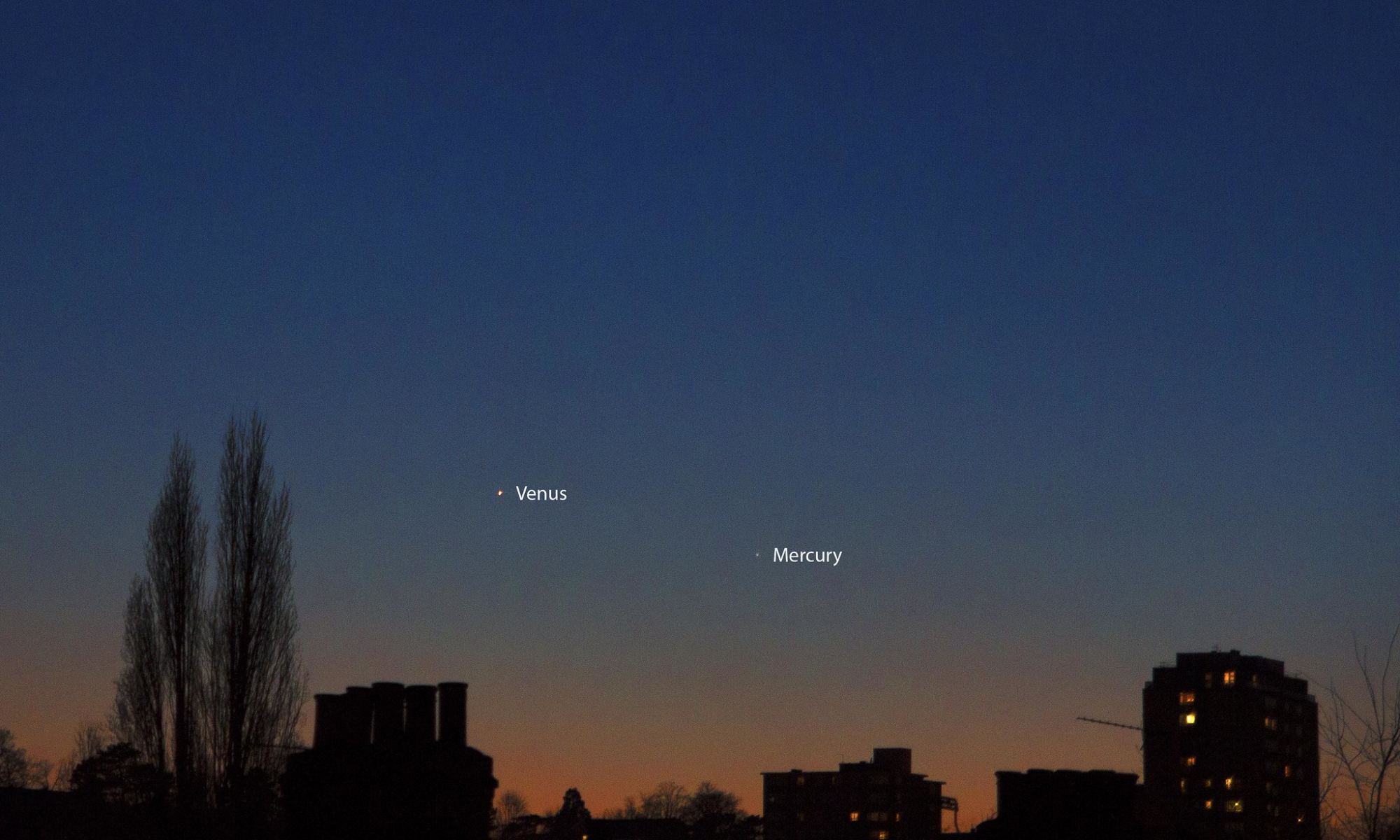What’s that? You say you’ve never seen elusive Mercury for yourself? You won’t have an excuse after this weekend, when the innermost world meets brilliant Venus at dusk in what is known as a planetary conjunction, one of the best for 2020.
The moment of closest conjunction actually occurs on Friday, May 22nd, at ~8:00 Universal Time (UT) 3:00 AM Eastern Daylight Time (EDT), with the pair just 54’ apart. That’s just a shade closer than twice the diameter of the Full Moon.
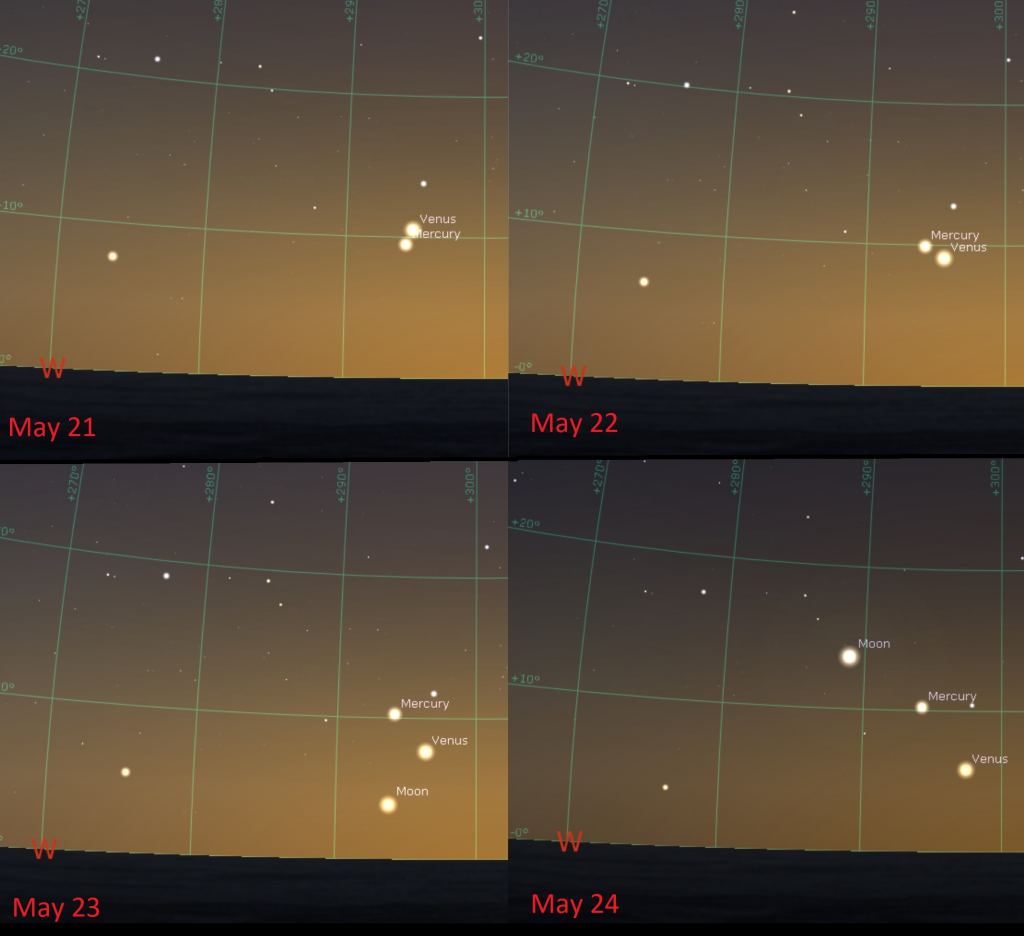
But you can watch the approach at dusk worldwide over several evenings before and after Friday. Conjunctions are always fun to watch, as the position and orientation of a pair of planets changes from one night to the next. Mercury and Venus are two of the fastest movers in the sky, meaning you’ll definitely see the changes over successive evenings. Venus is the first planet to catch your eye at dusk low to the west, shining at a brilliant magnitude -4.8, making it the third brightest natural object in the sky behind the Sun and the Moon. Use Venus to find Mercury, shinning 3 magnitudes (1/40x times) fainter, at a still respectable -0.7 magnitude.
At the eyepiece of even a small telescope, Venus displays a 6% illuminated crescent phase, 53” across. In contrast, Mercury shows a 72% illuminated, gibbous phase around May 20th, 6” across and growing. At their closest, you just might be able to nab to pair in a one degree field of view.
This apparition of Mercury sees the innermost world reaching greatest elongation 24 degrees east of the Sun on June 4th. From there, Mercury will imitate Venus as a slenderizing crescent as it races back towards inferior conjunction between the Earth and the Sun on July 1st.
Venus is also headed towards inferior conjunction on June 3rd, just missing the disk of the Sun by 10’. Though the disk of Venus is permanently shrouded in clouds and featureless, you can watch it swell from one night to the next as it approaches the Earth through the view of even a small telescope, while the daytime side slims down to a razor thin crescent. Can you see the spurious glow of ashen light on the nighttime side of Venus? With binoculars, I can actually see the crescent shape of Venus around this time… but can you guess the orientation of its horns with the unaided eye?
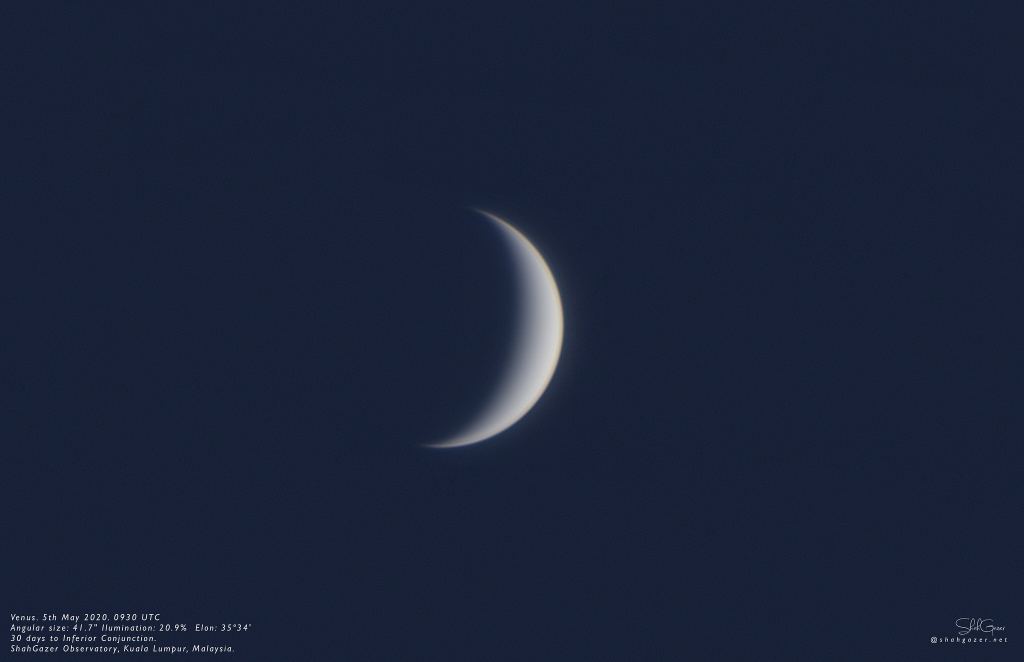
Finally, the Moon makes three, as the slim waxing crescent Moon passes the pair on the evening of May 23rd/24th. At their closest, the trio will fit within a 5 degree circle, forming a skewed smiling ‘emoticon’ conjunction, in a wry bout of celestial humor.
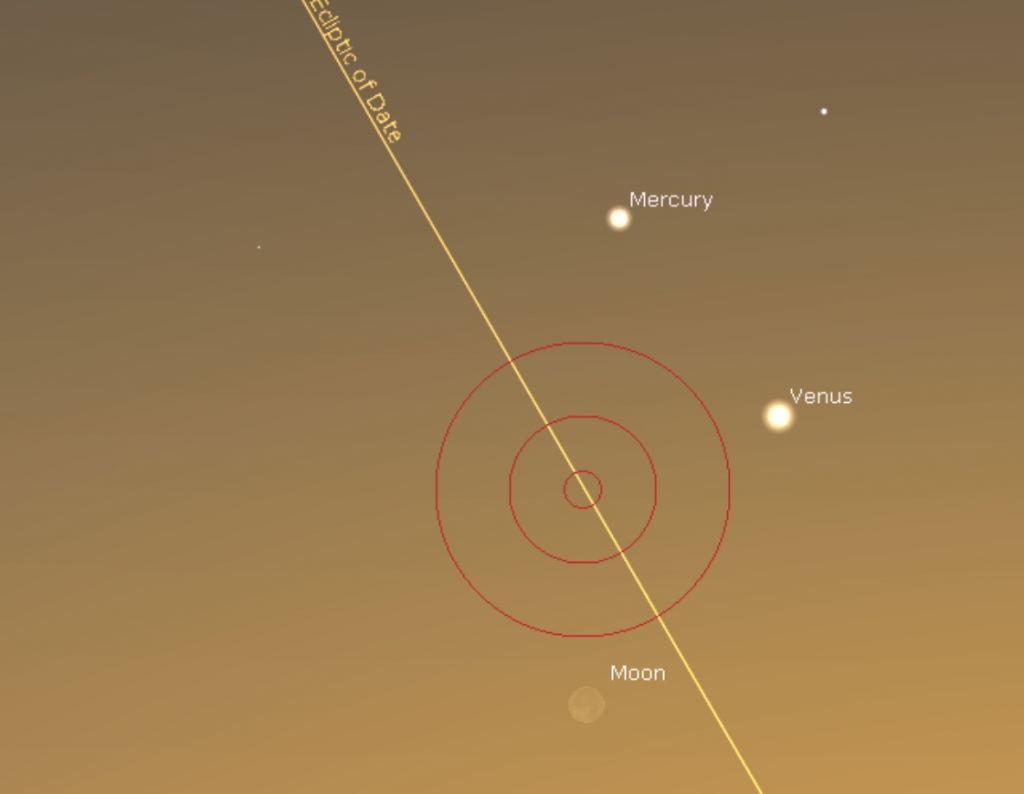
The Moon actually makes a fine visual guidepost around this time to spy Venus against the daytime sky. First sighting of the crescent Moon this weekend also marks the end of the Muslim month of Ramadan, and the start of the three day celebration of Eid.
Imaging the pair is as easy as using a tripod mounted DSLR and a wide field of view. A nifty project (if skies cooperate) would be to shoot the pairing on successive evenings with the exact same rig and framing to compile an animation of the changing orientation of the pair.
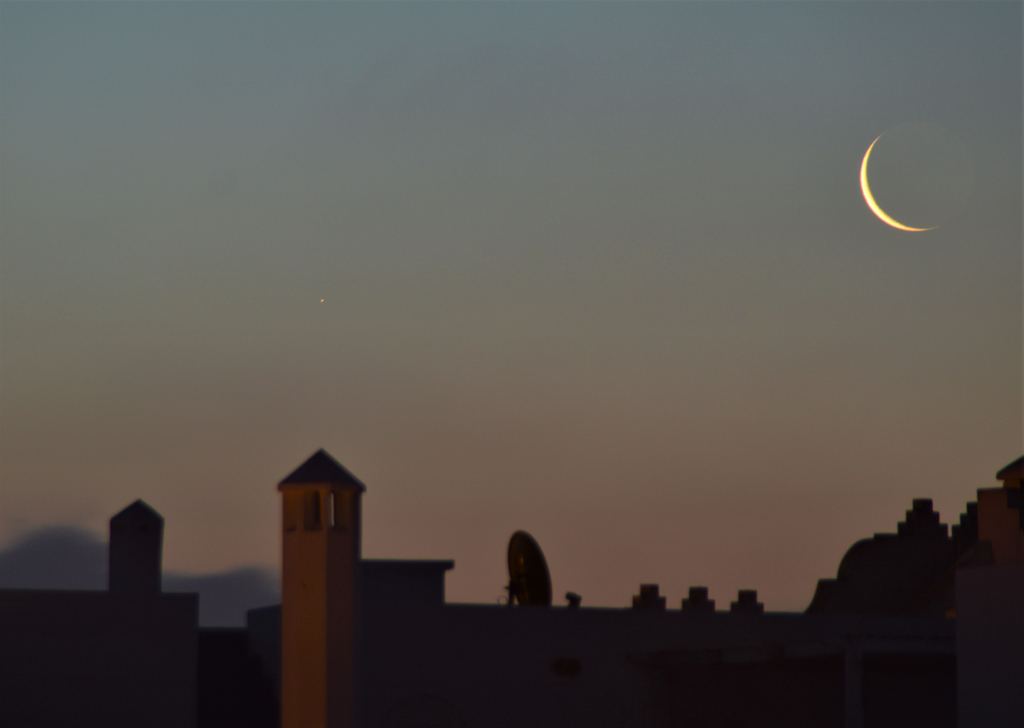
The next closest meeting of Venus and Mercury occurs on November 5, 2033 with the pair just 10’ apart. The closest pairing of Mercury and Venus for the 21st century occurs on December 24th, 2084 with the pair 41” apart (close enough to seem to merge as viewed with the unaided eye), 17 degrees west of the Sun at dawn.
Does Venus ever occult Mercury, or vice versa? Well, looking out over longer timescales, such strange events do indeed occur… if you wait long enough. Venus last occulted Mercury on May 28th, 1737, and will do so again on December 3rd, 2133. And wait until March 14th, AD 3129, and you can actually catch Mercury transiting Venus… this will be a tough one to spy, though, as the pair sits only 5 degrees from the Sun.
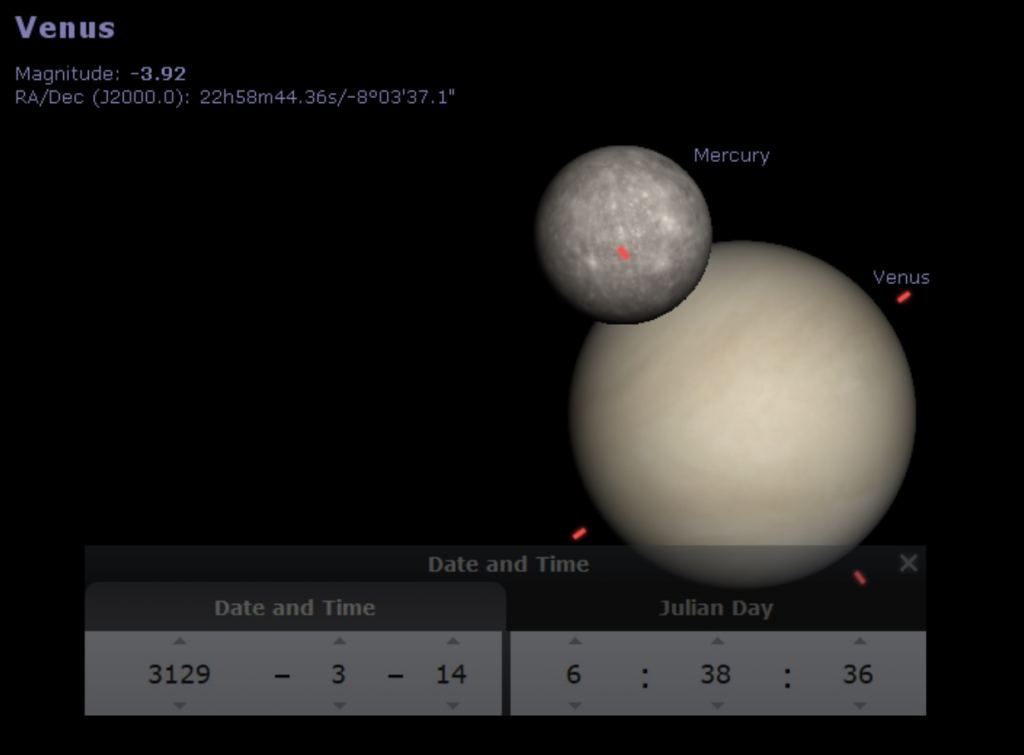
Sure, we won’t be around to witness such bizarre celestial sights… but if skies are clear this week don’t miss the planetary action at dusk, and be sure to check Mercury off of your life-list.
Lead image: Venus and Mercury at dusk from 2015. Image credit and copyright: Paul Hutchinson

